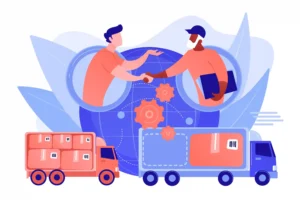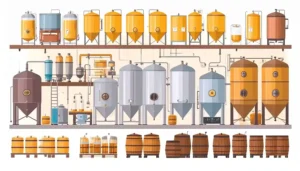8 tips to build a successful restaurant experience in times of crisis and beyond
Digital transformation is no longer a choice. That’s the key message from the experts who spoke at “How to build a successful restaurant experience in Covid times,” an online event organized by LS Retail and Microsoft. The panel included industry experts from Microsoft and LS Retail as well as Leon DeWet, a CIO with decades of experiences in the F&B industry. The group discussed how restaurants can build competences and resilience to maintain customer loyalty and thrive, now and through the next crisis. This blog is mainly for Restaurant management software & tips for Successful restaurant experience Restaurant Management Software Here are 8 tips from the experts to help you approach this digital transformation, so that you can ride the next wave of change instead of being crushed by it. 1. Rethink every step of the journey Yesterday, you had to deliver convenience and hospitality; today, you must also guarantee customer and employee safety. Many restaurants have added quick fixes, such as covering payment devices in plastic, so they can easily be sanitized. “How often does the reader on the contactless device not work, now that it’s covered in plastic?,” Minicola asked attendees, adding “And how often do restaurants ask me to touch the screen anyway to provide a tip?” The boom of contactless payments, home delivery, drive-thru and curbside is not temporary. Restaurants must step back, rethink the whole journey, and implement solutions that are effective and designed to last long-term. Two examples that were mentioned of additions that will bring a benefit now and tomorrow: Menus that can be accessed via a QR code are useful now – paper menus are hard to sanitize – and will provide a value later on, as they enable restaurants to make quick menu changes without wasting time or printing costs. Software to manage tables and seating plans can help you easily redesign your floor plan, with safely distanced tables and clear tracking of who is seating where and when for contact tracing purposes. In the future, table management software can help you optimize seating space, track the status of each table (who is waiting to order, who has been served) and easily accommodate last-minute guests, all the while keeping your service flawless. 2. Focus on mobility Mobility should be a priority in any digitization project. Running your Point of Sale on mobile devices helps you manage the flow of guests and staff inside the restaurant premises. Your server can take an order from a group sitting on the terrace, and then go to another table, take their card payment and see them out. Service is faster and more convenient for your guests, who can stay seated throughout. At the same time, you reduce the risk of contagion by reducing needless walking around and queuing at the till, and by letting servers using a personal device instead of sharing a standard till. And if your POS offers a two-way connection to the display systems in the kitchen, you get a whole set of extra benefits. “With our restaurant software, when you punch in an order at the POS, the order is sent automatically to a digital display at the correct kitchen station. Your front-of-house staff is spared all the needless back and forth from the table to the kitchen and to the register. The result is less risk of contact, and less time wasted,” said Eric Miller, Regional Director at LS Retail. But this is just scratching the surface. Mobile POS, especially when part of an interconnected technology platform, also enables more precise communication between front of house and kitchen, reduces the risk of production mistakes, and helps speed up table turns. Michael Mento, Surface specialist at Microsoft, described how eagerly restaurants have adopted the Surface tablet devices, which also come with accessories specifically designed for use on the restaurant floor. 3. Build your experiences on a strong technology platform Customers demand consistent experiences, and these can only be achieved through a unified approach to technology. Unified software solutions are increasingly replacing traditional fragmented IT setups. The benefits are well known: Managers geta 360-degree view of the organisation, with all business and customer data accessible in one place. Decision making is faster, as managers can get actionable reports, accounts and statistics exactly when they need them. Implementation and management costs are lower, as you don’t need to integrate separate systems and to maintain these integrations. You can transmit information quickly across the company, from the dishes on today’s menu to recipes, prices and nutritional content. So everyone can always perform at the top of their abilities. And if you run your unified software in the cloud, you can grab opportunities as they arise. As the pandemic hit, companies that run their software in the cloud, and who were not burdened by traditional on-prem infrastructure, investments and timelines, have been able to add innovative technology and transform their business models faster. “For many restaurants, the ability to add systems for pickup, delivery, and curbside made the difference between success and closing up doors,” Miller pointed out. Leon DeWet, former CIO at F&B enterprises Cracker Barrel and O’Charley’s, reminded business to consider how well the selected software and hardware work together. “If one works, but the other one doesn’t deliver, the project fails,” he noted. “Look for a solution that is proven for software and hardware working together.” Mento, from the Microsoft Surface team, echoed DeWet’s words. 4. Track changes in customer behavior With people working from home and stuck in lockdowns, restaurants have seen tremendous changes. They have lost old customers, gained new ones, and seen regulars approach them at different times, with new needs. These are changes businesses must pay attention to. “You need to capture this data, or you have no way to build your strategy on driving loyalty now and into the future,” said Minicola. “You cannot establish and foster loyalty without data,” she added. Access to data that is both reliable and timely is necessary for action. You need to clearly see what is happening to react, and prevent issues and waste. “During the pandemic, many restaurants have had problems sourcing specific ingredients,” said Miller. “With our software, you can do predictive cost analysis, and experiment varying prices, menus and recipes. The system helps you find the sweet spot with optimum benefits. You can then use this knowledge to
8 tips to build a successful restaurant experience in times of crisis and beyond Read More »




